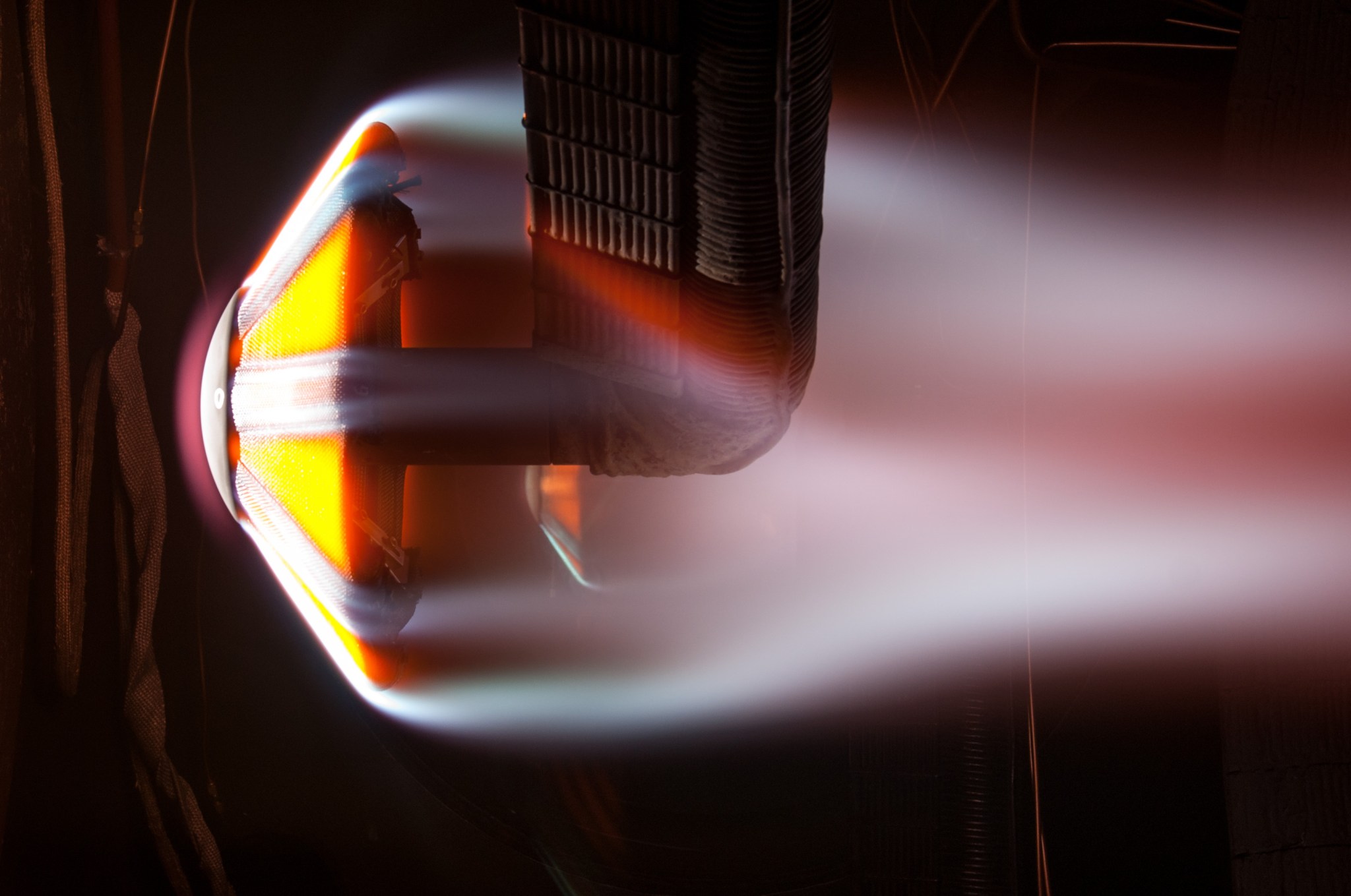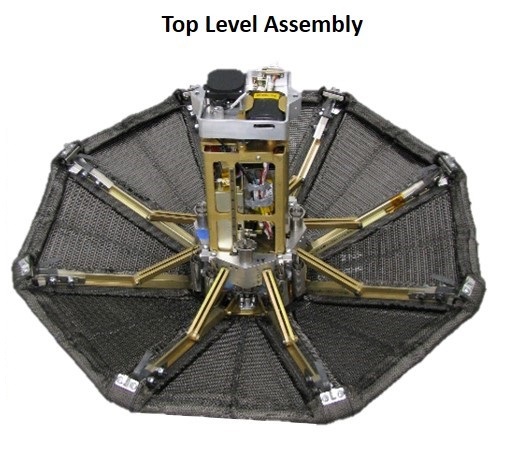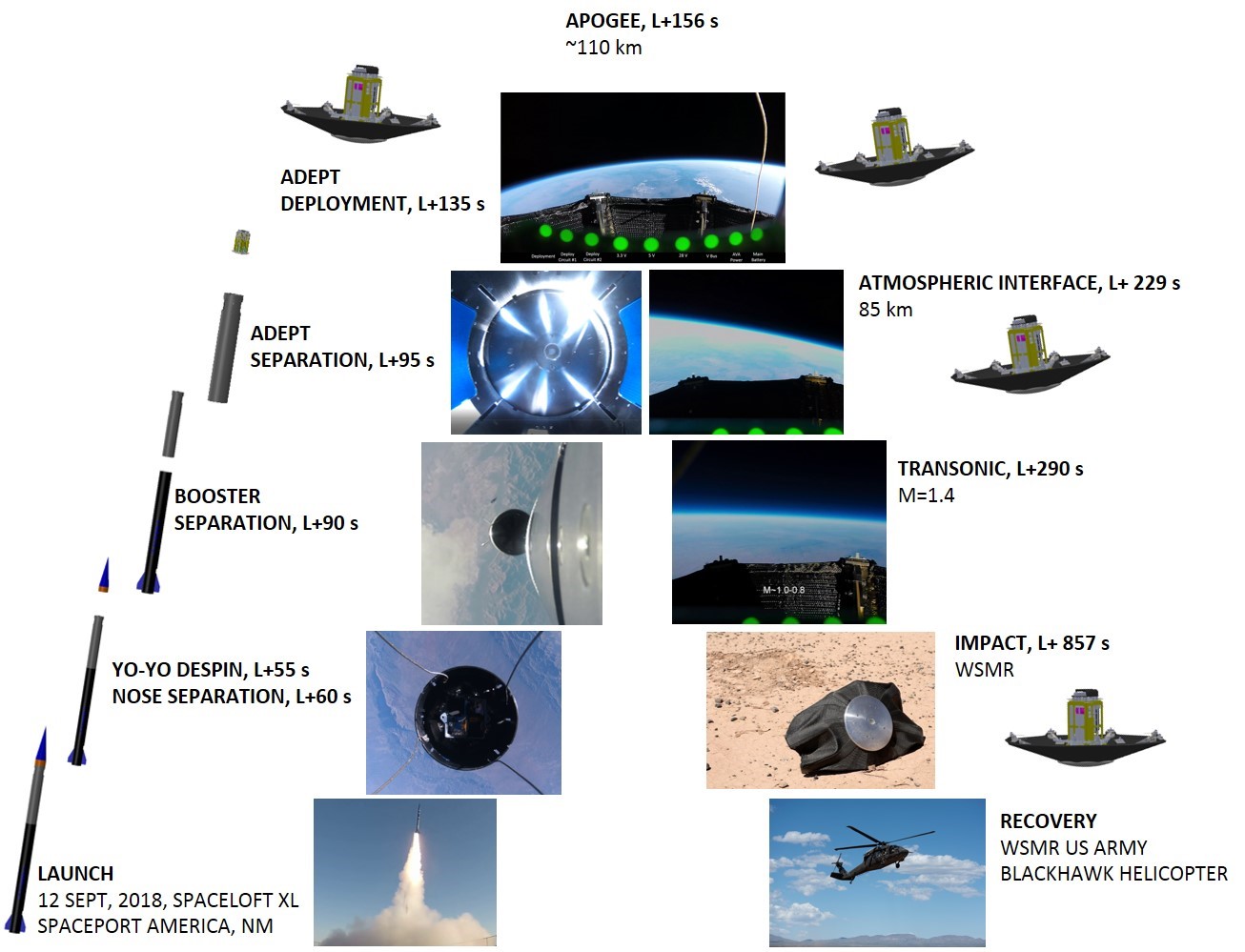The Entry Systems and Vehicle Development Branch has led the EDL architecture analyses, systems engineering, design, manufacturing, integration, ground testing and flight testing of the mechanically-deployed atmospheric entry system known as the Adaptable Deployable Entry Placement Technology (ADEPT). Studies included everything from analyses and design of a large (~23-m) diameter system for landing heavy masses at Mars and a 6-m system for entry at Venus, to the development of the nano-ADEPT (<1-m diameter) for the entry of small payloads.
Nano-ADEPT
NASA’s future missions will require ever-greater mass delivery capability in order to place scientifically significant instrument packages on distant bodies of interest, to facilitate sample returns from them, and to enable future human exploration of Mars.
The ADEPT architecture represents a completely new approach for entry vehicle design using a high-performance carbon fabric to serve as the primary drag surface of the mechanically deployed decelerator and to protect the payload from hypersonic aerothermal heating during entry.
On September 12th 2018, a sounding rocket flight test was conducted on a nano-ADEPT (0.7-m diameter). The purpose of the Sounding Rocket One (SR-1) test was to gather critical flight data for evaluating the vehicle’s in-space deployment performance and supersonic stability. This flight test was a major milestone in a technology development campaign for Nano-ADEPT: the application of ADEPT for small secondary payloads. The test was conducted above White Sands Missile Range, New Mexico on a SpaceLoft XL rocket manufactured by UP Aerospace.
The successful SR-1 experiment will bring the Nano-ADEPT to Technology Readiness Level 5 (TRL5). After SR-1, the logical next step for the technology is an Earth re-entry experiment from orbital velocities. Such an experiment would mature Nano-ADEPT to TRL6 for entry from low Earth orbit (LEO) and direct entry at Venus, Mars, and Titan.





























